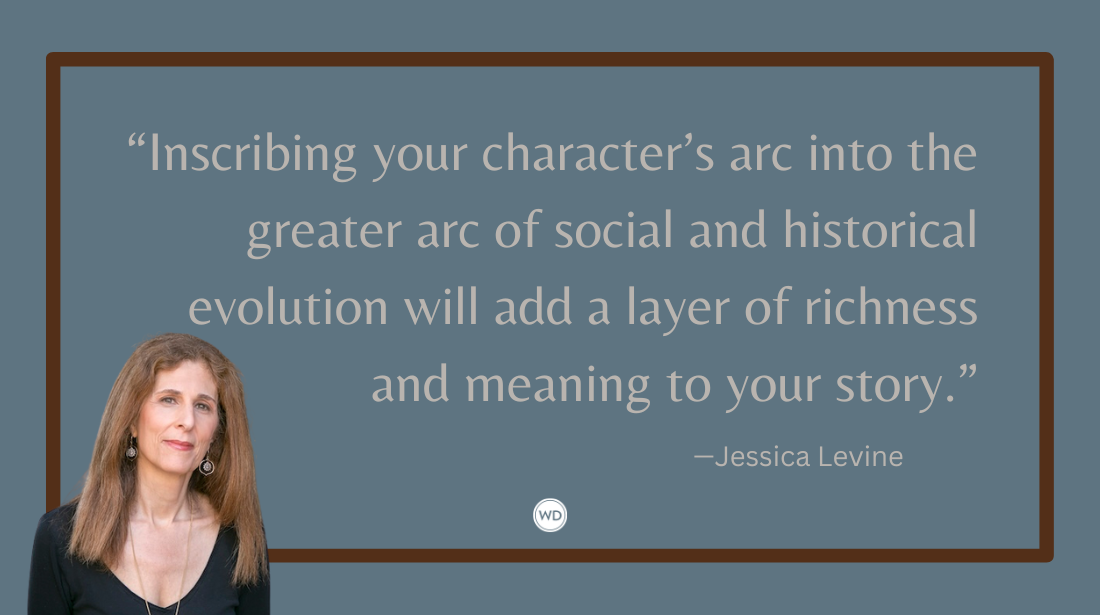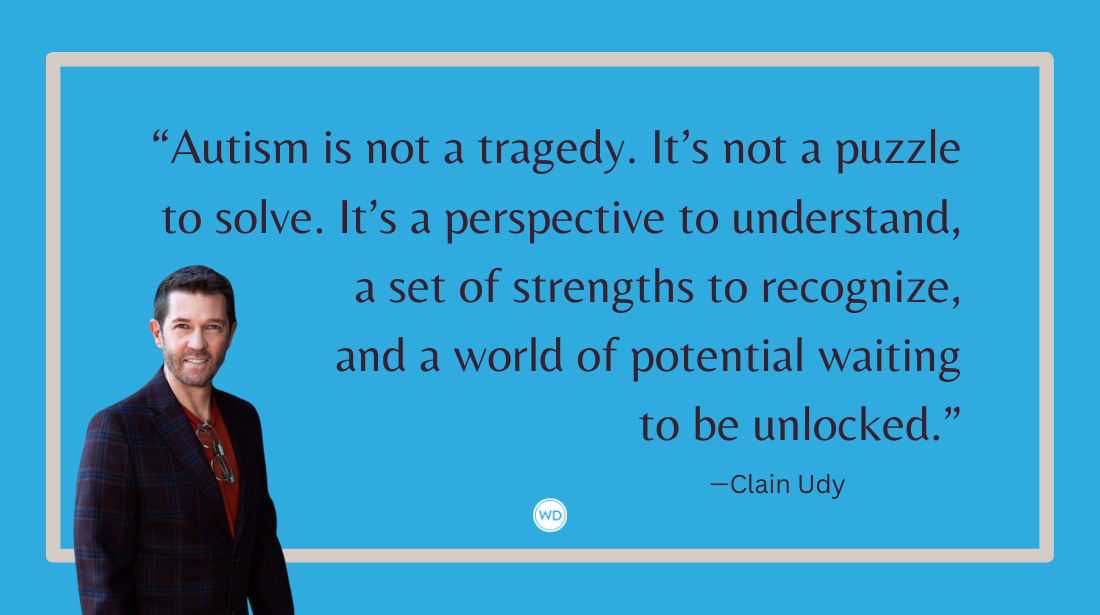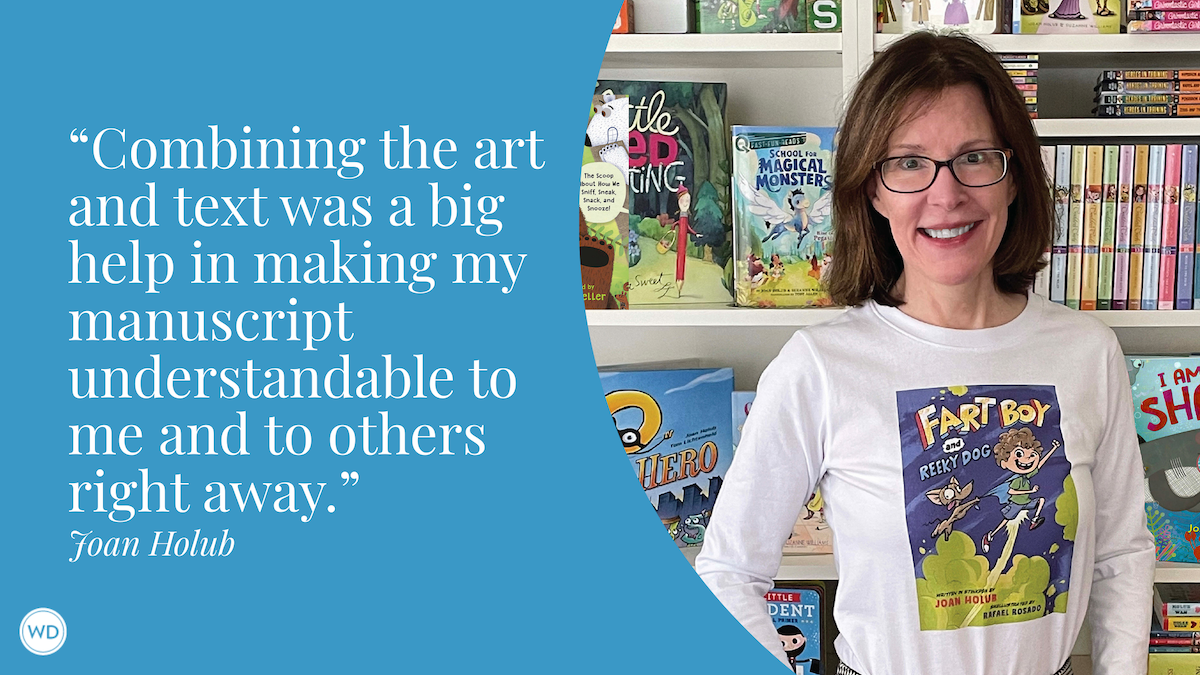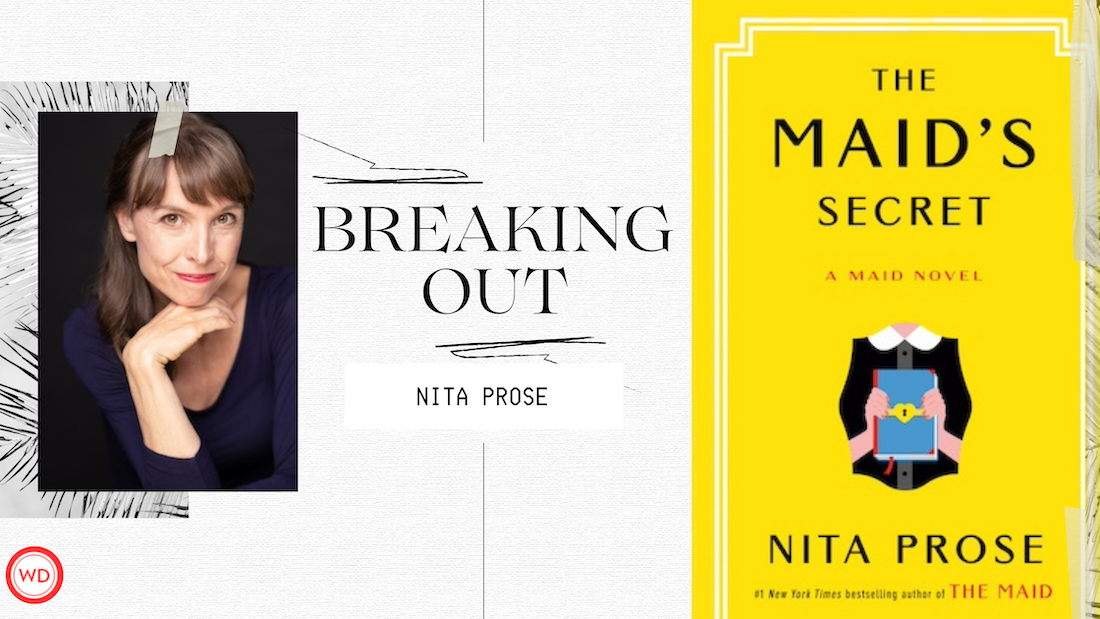6 Tips for a Satisfying Short Story Ending
Sticking the landing of a short story can be challenging. Peter Mountford offers 6 tips and tricks to crafting a satisfying short story ending in this article from the Nov/Dec 2022 issue of Writer’s Digest.
Many of my students and clients spend years working on a debut novel, only to discover that to get a literary agent’s attention they need to publish something—maybe a few short stories in literary magazines. But writing a great (or even publishable) short story isn’t easy.
Faulkner famously said every novelist is a failed short story writer, and short stories are the most difficult form after poetry. There’s some truth to the idea that short stories have more in common with poems than novels. Novels are more labor intensive, for sure, but there’s something fluke-ish and rare about a perfect short story.
Short story writing hones your craft in miniature, without having to throw away multiple “practice” novels, which can be—speaking from experience—uncomfortable and time-consuming.
The best short stories are remembered for their ends, which “leave the reader in a kind of charged place of contemplation,” according to Kelly Link—a Pulitzer finalist whose fifth collection of stories, White Cat, Black Dog, will be out soon.
David Means, author most recently of a new collection of stories, Two Nurses, Smoking, said, “A good ending doesn’t answer a question. It opens up the deeper mystery of the story itself. There isn’t room in a short story to do anything but leave the reader alone with the story.”
“I want an ending that feels like a punch in the gut that I wasn’t expecting but totally deserved,” says Rebecca Makkai, author of Pulitzer Prize finalist The Great Believers, and whose stories have had four appearances in the Best American Short Stories series.
What Is an Ending?
Before we get to techniques, there’s the question of what we mean by the “end” of a story? Is it the last scene, or the climactic turn, or the actual final sentences?
In the days of O. Henry’s short stories, the climax, last scene, and final sentences were all largely the same, and featured an unlikely plot twist accompanied by direct moral instruction. “The Gift of the Magi” concludes with the husband and wife realizing that in an effort to give their spouse the perfect small gift they’ve each spoiled receipt of their own small gift. In the final paragraph, O. Henry awkwardly steps in to explain the moral of the story, how they “most unwisely sacrificed for each other the greatest treasures of their house.” It feels hoary and antique to a modern reader.
Now, the big climactic moment often happens two-thirds of the way through the story, not on the last page, and the story’s moral or lack thereof must be deduced by the reader.
Consider ZZ Packer’s amazing “Brownies,” where the story’s confrontation builds from the first sentence, when one Black Brownie troop hatches a plan to “kick the asses of each and every girl” in another white Brownie troop, after possibly overhearing a racial slur.
About two-thirds through the story, right as they’re about to fight, it’s discovered that the white troop is mentally disabled. But the story doesn’t end there with a moral quip, as it would have 100 years ago. In the few pages that follow, on the bus home after the confrontation and its fallout, the narrator describes her father, who once asked some Mennonites to paint his porch. “It was the only time he’d have a white man on his knees doing something for a Black man for free.”
Another girl asks her if her father thanked them. “‘No,’ I said, and suddenly knew there was something mean in the world that I could not stop.” The reader sees now that this story is about how terrible treatment can lead to anger and further cruelty.
This part of the story, the bus ride after the action, is what you might call a coda, and the coda often contains the real “magic” in a contemporary story. The word coda comes from music, where it means an ending that, according to the dictionary, stands “outside the formal structure of the piece.”
In the coda—and not all contemporary stories have a coda, but most do—the writer helps the reader identify meaning without stating it as bluntly as O. Henry did. By leaving the work of interpretation to the reader, the writer allows for variety in how we might interpret the story. With ambiguity, the reader can continue to think about the story.
The Process: To Plan or Not to Plan
John Irving famously (supposedly?) writes the last line of every novel first, and then finds his way there.
Similarly, Kelly Link wants to know the end before she starts—it’s the least shiftable piece for her. She mulls a story over while swimming and walking. Having an ending in mind makes her more “surefooted about where to begin,” and what choices to make early in the story.
When editing or teaching, she suggests that a writer’s first idea for an ending often might be too obvious, and the second merely less obvious. The third will be more innovative, or singular.
When friends are working on stories, she enjoys kicking around ideas for their ends, going straight for some wild “‘bad idea’ that’s large and fun, and often goes somewhere strange or personal or interesting.”
On the other hand, Danielle Evans, whose second collection of stories, The Office of Historical Corrections, came out in 2020, said she can’t get excited about writing something unless she’s the first reader surprised.
Rebecca Makkai says she often has an ending in mind from the start, but “I very much hope I’m wrong. If I land right where I always thought I would, I’ve probably written a terribly obvious story.”
My own experience is that often when the story concludes in a way that is somewhat obvious or inevitable from the outset, there is even more of a burden on the writer to summon a brilliant coda and some stunning insights to wow the reader.
Tricks of the Short Story Trade
What do you do when you’re stuck, don’t like your current ending, or didn’t plan your ending? Several simple techniques might open things up for you.
Trick #1: Jump in Time
“I try to remember that the ending doesn’t have to stay in the same room or world or mode or timeframe as the rest of the story,” Makkai says. “These seismic shifts shake us loose from the world of the story and are very likely where we’ll find the story’s echoes and meanings.”
In Danielle Evans’ story “Snakes,” two 8-year-old cousins (one biracial and one white) are with their belittling, racist grandmother for a summer stay. The cousins get along, but at the climax the white cousin pushes narrator Tara out of a tree, almost killing her. The story could end there. Instead, “Snakes” jumps forward.
In her 20s, Tara has finished law school and likes to retell the story almost as entertainment. Her cousin is in a radically different place and has attempted suicide. When Tara visits her in a mental hospital, they’re kind to each other, yet their personalities and differing home lives sent them on radically different paths. The final paragraphs reveal that the narrator wasn’t pushed—she jumped from that tree, as a successful effort to get away from her grandmother. Her white cousin was left behind and endured a damaging, toxic relationship. The ending provides cues as to why their paths diverged, and the risks Tara took to escape.
You can also leap back in time. In Charles D’Ambrosio’s “The Point,” the story wraps up after the teenage narrator successfully and safely transports a drunk woman to her house. Then the coda: a flashback, the narrator coming upon his father after he’d shot himself in the head. It’s still a jump in time far away from the frame of the story but echoes an earlier time he couldn’t save someone.
To apply this approach, don’t be shy with time. Look for a big moment well in the future. Or, if the story has had few flashbacks, but the reader senses that the main character has a complex backstory, maybe you can go there to add another layer.
Trick #2: Change Lenses
Perhaps the most famous example, and one that Makkai suggested, is Flannery O’Connor’s “A Good Man Is Hard to Find.” We accompany the grandmother’s POV until the end, when she’s killed. Then, the story continues briefly for a few paragraphs—after she’s dead—switching to a third-person omniscient perspective.
“He’s terminating the conversation and the story,” David Means said. The story is also one of his favorites. The Misfit has the final say, he points out, and his concluding thoughts “sit there on the page forever, but also makes you go back and reconsider the story and even O’Connor.”
Makkai points to Percival Everett’s hilarious and subversive “The Appropriation of Cultures,” as an example. Daniel, a Black man in South Carolina, decides to change how he sees the Confederate flag. He decides to treat it as a “Black Power flag,” then reinvents “Dixie” as a celebration of his own racial and cultural identity. Baffled racists are left floundering as Daniel appropriates the icons of their hate.
In the story’s final movement, the scope changes completely, pulling back to reveal the landscape from a more distant perspective. We leave Daniel’s story behind as the narrator shows other Black folks in Columbia, S.C. adopting the trend. We’re told the state’s white leaders decided to take down that flag—its meaning now inverted—from the state house.
To apply this to your own work, play with perspective—try stepping out of the confines of the story and looking at what might happen as a result if you pull back, or change the POV to an omniscient narrator. However, you can’t usually switch perspectives from one character to another. This tends to feel forced and jarring for the reader.
Trick #3: Make a Flat Character Three-Dimensional
This is a favorite of mine. Tobias Wolff’s “Bullet in the Brain” combines this technique with a swing to a new POV—many great stories use several techniques at once.
The unpleasant POV character is shot dead about two-thirds of the way through the story, and the story pivots to an omniscient narrator. The narrator now catalogues Anders’ memories that didn’t flash in the final milliseconds of his life—memorizing hundreds of poems so that he could give himself the chills, seeing his daughter berating her stuffed animals, and so on.
Crucially, these unrecalled memories transform Anders from unlikable flat character to someone complicated. By the time the bullet leaves his “troubled skull behind, dragging its comet’s tail of memory and hope and talent and love into the marble hall of commerce …” readers are moved to tears.
Interestingly, the character in Wolff’s story has no epiphany, he doesn’t evolve. Only the reader’s understanding of the character changes. As novelist and short story writer Jim Shepard once wrote: “a short story, by definition, does have a responsibility in its closing gestures, to enlarge our [the reader’s] understanding.”
To do this, look for a character in the story who might be fairly important—possibly an oppositional character to the protagonist—but remains flat or slightly cliché. The mean jock. The shy nerd. Find a situation at the end where they’re acting in a way that complicates the reader’s sense of them. You can also see this in the final scene of “Brownies,” when the shy narrator and her shy friend become the center of attention.
Trick #4: Shift From Summary to Scene
Donald Barthelme’s surreal, darkly funny “The School” is told primarily in summary, narrated by a teacher describing a school year marked by death. His students try to grow orange trees but the trees wither; then the snakes die, along with herb gardens, tropical fish … the class’s puppy. The deaths are increasingly surreal and funny.
No scenes occur until the final page, when Barthelme “lands,” finally, in a scene, where the students grill the teacher with amusing and improbable over-eloquence over the meaning of death and life. The students press him for a demonstration regarding the value of life and love; he kisses his teaching assistant on the brow, and she embraces him (yes, the story is very strange). A new gerbil walks into the room to enthusiastic applause.
After reading “The School,” I borrowed this technique—summarizing a broad period of time, and then landing in a pivotal scene—for my story “Two Sisters,” which is unreliably narrated by a young man who hangs around with a wealthy jet-setting group. After summarizing the preceding year, the story shifts to scene where one of the rich kids says he’s no longer welcome—they find him too weird. Overwhelmed, he tries to attack her, but she gets away. He’s literally and metaphorically stranded in the wilderness.
The story couldn’t be more different in style and tone from “The School,” but the technique is the same.
To make this technique work, just look for a story that has a conversational style and covers a lot of ground, in terms of time. A narrator who seems to be chatting away about a period of time, and then drop them into a moment which animates and changes the situation they’ve been describing.
Trick #5: Return to an Object or Situation Mentioned Earlier
If a student or author who Kelly Link is editing is struggling with the end to their story, she suggests looking to “the beginning of the story, to see what was being promised there.”
Often, a story closes by returning to an object, situation, or idea mentioned early in the story. Kirstin Valdez Quade’s remarkable story “Nemecia” describes the narrator’s cousin’s shattered doll on the first page. By the story’s end, the narrator has been safeguarding this doll for half a century. She calls her now-elderly cousin to ask if she wants the doll, which the reader can now see symbolizes the cousin’s harrowing childhood. The cousin says she doesn’t even remember the doll.
Asked how she came up with this ending, Quade explained the initial draft was about 50 percent longer. An editor pointed out a sentence that would become the story’s last line, which echoes the doll’s shards. She took the advice, and “remembered the doll from the beginning and saw the opportunity.” Once she saw the proper end, she cut away everything unnecessary throughout, leaving this unforgettable conclusion.
To do this, add things to a story that you don’t know how or if you’ll use later. If they don’t end up being useful, cut them, but it’s easier to find these opportunities if you’ve scattered potential reference points in the first half of the story.
Trick #6: If All Else Fails, Keep Going
Danielle Evans points out that she often writes a paragraph that could end the story, but then she keeps going, “and those extra beats are what open it back up and make everything more interesting.”
Means offers a similar recommendation—and clearly Quade did this with “Nemecia.” “When you’re starting out as a writer,” Means said, “you sometimes write past the ending and then have to go back and cut, finding the right place to let it stop,” he says. “It’s a horrible feeling, cutting your own work, a sort of self-amputation, like the hiker who has to cut off his own foot—stuck between rocks—to keep living. But the end result can be stunning. The reader wonders how you did it. You’ve covered your tracks.”
Wrapping It Up
The best short stories can seem miraculous, intimidatingly perfect. Ends so inspired that no mere mortal could ever come up with something like that. But people do it all the time.
Sometimes it’s just trial and error. Sometimes you have to overwrite, pile up the writing and then see what should be kept. Then again, as Evans said, if you can make it to the final third of a story, and the first two-thirds are right, then you can “find the ending on momentum.”
Either way, give yourself permission to surprise. While you’re exploring, listen for a theme in what you’re doing—be attentive to metaphor. If your story has had no backstory yet, try a flashback. If your story has been frantically running all over the place, try slowing down, describe the poppies blooming outside, the way the sunlight catches in their papery petals, the bees hovering nearby. Open a door for the reader, let them step outside and take the story with them.
Peter Mountford is a popular writing coach and developmental editor. Author of two award-winning novels, A Young Man’s Guide to Late Capitalism and The Dismal Science, his essays and short fiction have appeared in The Paris Review, The New York Times (Modern Love), The Atlantic, The Sun, Granta, and elsewhere. For more information, please see: https://www.mountfordwriting.com/








